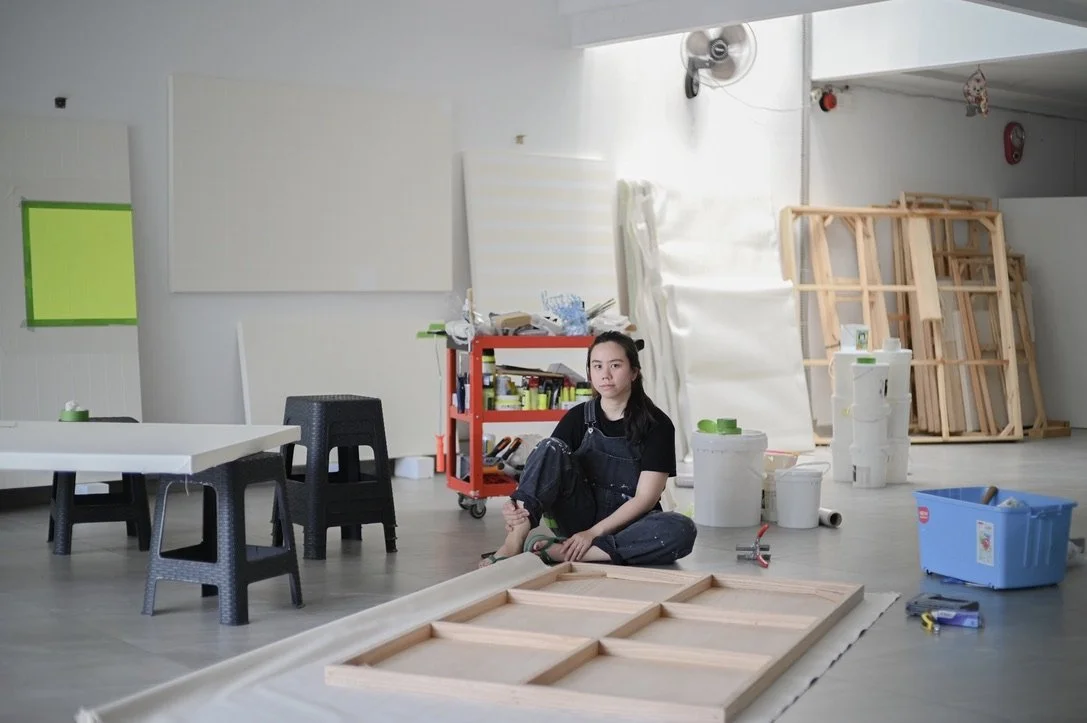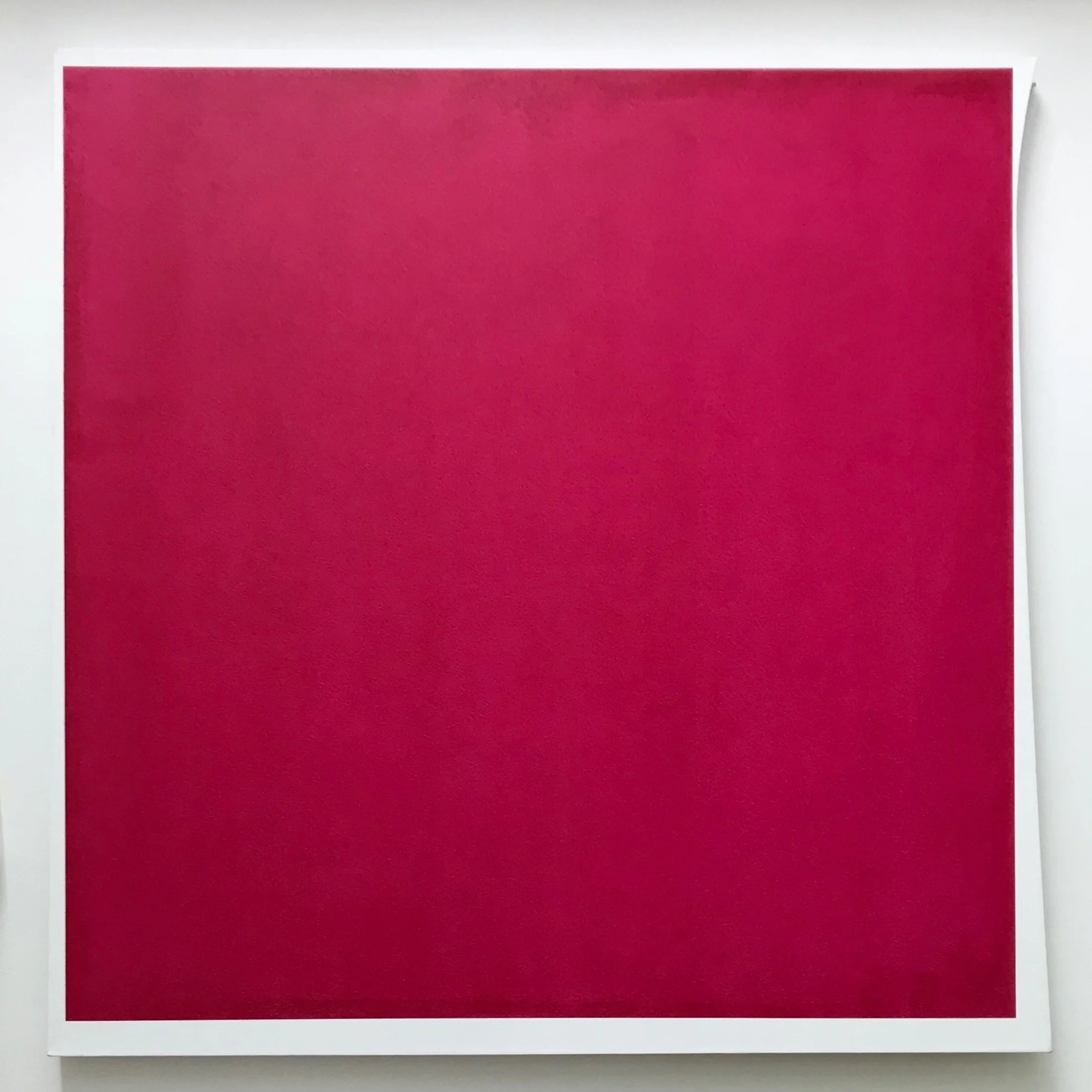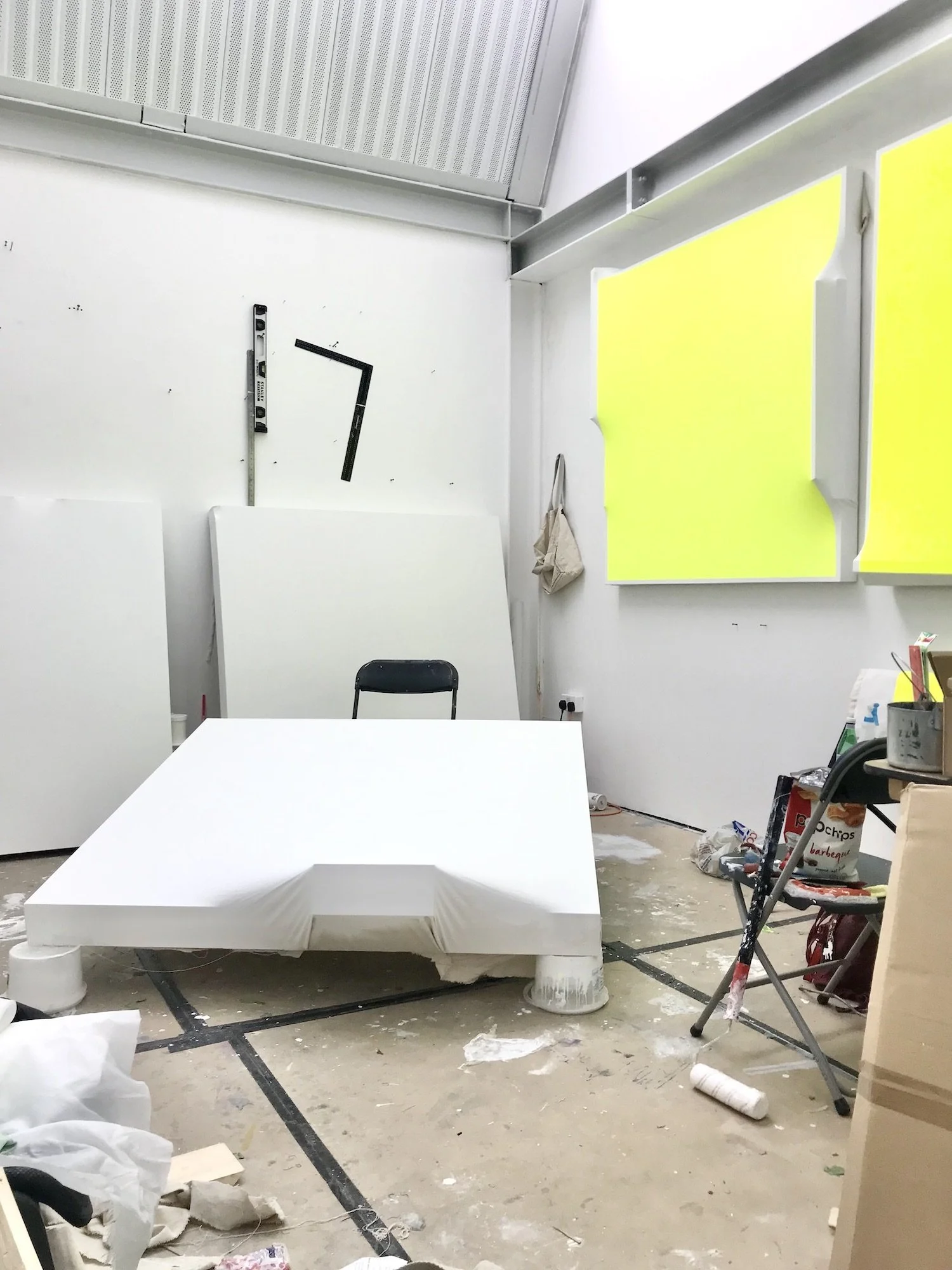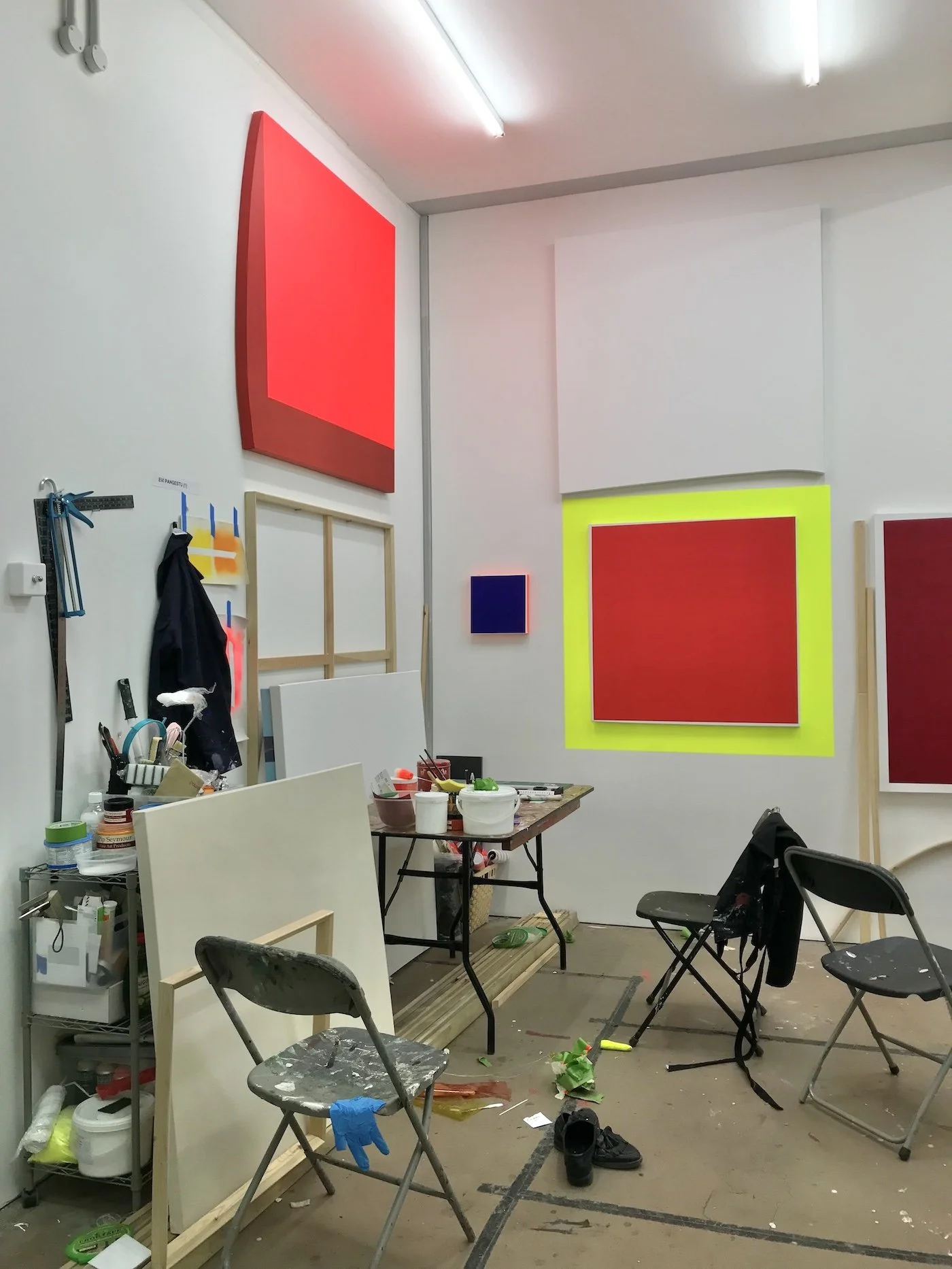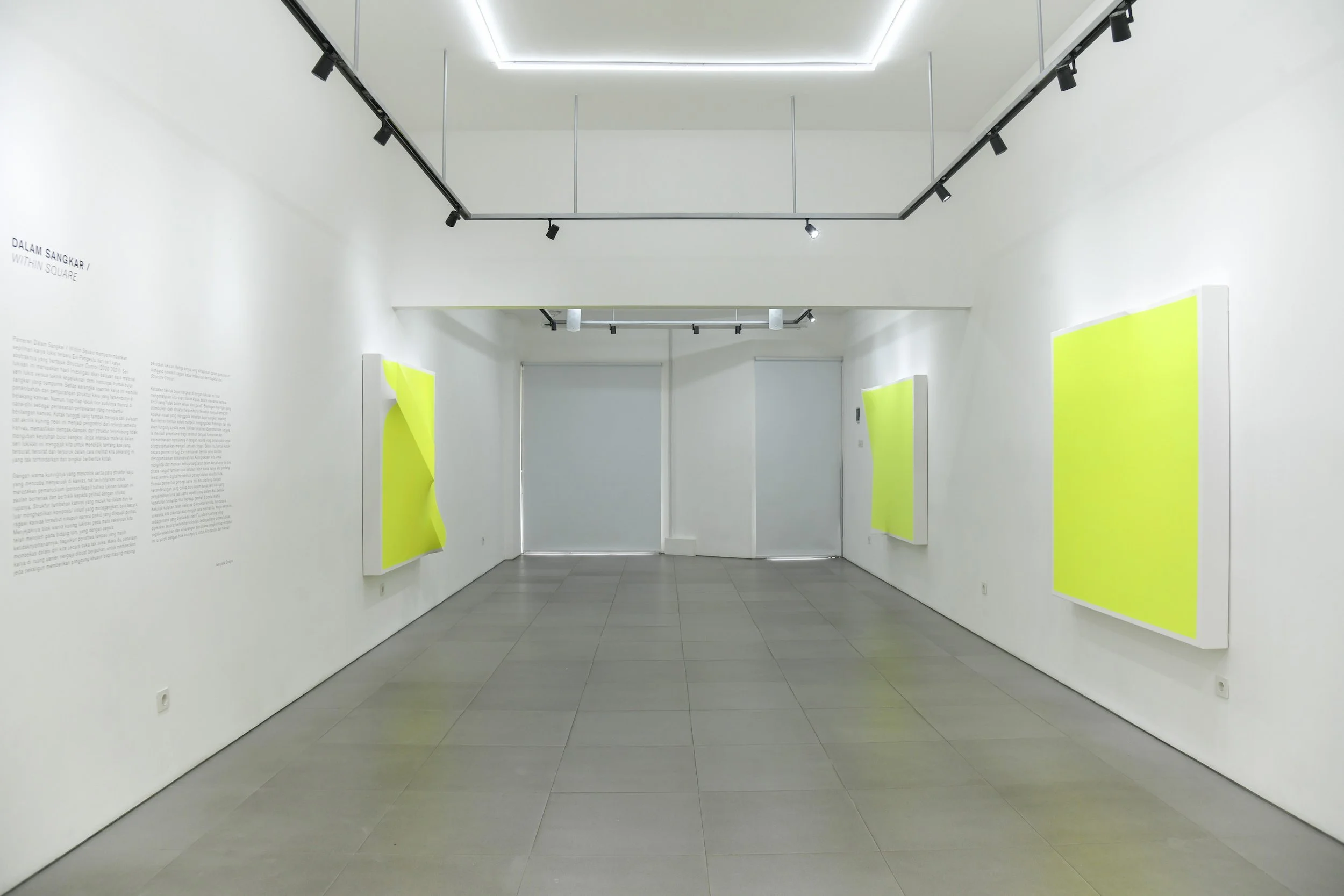Fresh Face: Evi Pangestu
Rebellion and control within the conventions of painting
A&M's Fresh Face is where we profile an emerging artist from the region every month and speak to them about how they kick-started their career, how they continue to sustain their practice and what drives them as artists.
Evi Pangestu, 2022. Photograph by Kemal Yusuf. Image courtesy of D Gallerie.
Born in 1992 in Indonesia, Evi Pangestu explores the idea of rebellion and control through the medium of painting. She challenges the conventions of painting by manipulating its fundamental building blocks: canvas, paint and support. The resulting works are minimal in form but maximal in their visual impact.
Evi Pangestu, Fluorescent Red Square on Red, 2017, acrylic on canvas. Image courtesy of the artist.
Evi Pangestu, Layer of Magenta, 2018, acrylic on canvas, 125 x 125cm. Image courtesy of the artist.
This trajectory in Evi’s practice was refined during her studies at the Royal College of Art in London from 2017 to 2019. That was the time when she zeroed in on the square form and adopted neon yellow as a signature colour in her paintings. Indeed, Evi’s earlier investigations featured other colours and graphic painted elements as seen in Fluorescent Red Square on Red (2017) and Layer of Magenta (2018). The artist described the decision to limit her palette as “a necessary move that helped her focus on her concepts''.
Evi’s Royal College of Art Studio. Image courtesy of the artist.
Evi Pangestu, Forced Interaction, 2021, acrylic on canvas, 150 x 150cm. Image courtesy of the artist.
Thus, Evi’s thesis project Squaring Square concentrated on the white canvas ground, the irregularly-shaped stretchers and a centralised painted yellow square. They are paintings with bulging protrusions that look as though they are trying to break free from their confines. Yet, the works are also anchored by the recurring motif of a large painted yellow square which serves to reinforce their “square-ness”. In this body of work, clearly defined conceptual parameters and specificity of form are intrinsically connected.
The ideas of rebellion and control are communicated through the tension evoked into Squaring Square and its affiliated series Structure Control. To achieve such an effect, one significant technical challenge Evi needed to overcome was the construction of these paintings. Custom timber wood stretcher frames were built to accommodate the weight of additional armatures and protrusions. Her paintings are not images but clunky objects that have a defiant material presence.
A failed experiment for Finding Compromise, 2020. Image courtesy of the artist.
Evi Pangestu, Little Compromises, 2022, gesso on canvas, 100 x 160cm. Photograph by Andang Iskandar, image courtesy of D Gallerie.
In her latest body of work Finding Compromises, Evi hones in on the grid as a structure for formal play. Starting with a rectangular canvas inlaid with smaller rectangular grids, she finds opportunities to insert squares within the composition or what she calls “compromises”. Utilising white gesso on canvas ground, the artist’s intervention is decidedly minimal. However, upon closer inspection, there is a textural richness as these gesso-ed lines and squares create a subtle ridge on the painting’s surface. Pictorially, these “compromises” bring a sense of dynamism to the static framework, whilst creating moments of pregnant pause. They engage with the grid’s seriality, finding harmony even as they straddle between standing out and fitting in. Evi’s approach attempts to imbue meaning into the formal language of abstraction.
Interview
Evi Pangestu, Squaring Square, 2019, acrylic on canvas, 150 x 159cm. Image courtesy of the artist.
In 2019, you graduated with a Masters in Painting at Royal College of Art, London. Can you describe your experience?
I had a great time! The best part of Royal College of Art (RCA) was the people in it. We had amazing tutors, technical instructors and visiting lecturers. On top of that, the environment was extremely competitive and critical as well. When I started my Masters, I was ready to move on from what I had been making before, and so I spent my first-year experimenting. My practice changed so much; more than I thought it would. I learned to have fun with my work again, to embrace experiments and failures as a necessary exercise.
I opened my mind to things I never imagined making. I saw that painting has so many layers and wide interpretations within it. My mentors were very supportive and motivated me to want to explore further. As it was a shared studio space, people would often come around giving unsolicited advice. I found it annoying then, but have now come to appreciate those moments. I believe that the pressure and competitive nature of the programme helped me build a strong ground. Moreover, I have met many talented people that have become my friends!
Evi’s Royal College of Art Studio, 2017-18. Image courtesy of the artist.
Evi’s MA Graduate presentation, exhibition view at RCA, 2019. Image courtesy of the artist.
Who has been a mentor or an important artistic influence? And why?
My RCA mentor for two years John Slyce and my final year mentor Ivan Seal. They supported me throughout the biggest change in my practice. I feel that they genuinely believed in me and prepared me well to stand on my feet.
There are quite a few artists I look up to, but the one who influenced my current works the most is Angela de la Cruz. I love the power of her works and how she successfully translates her concerns by challenging conventions in the language of painting. I believe in painting. Reflecting on de la Cruz’s work, I want to push painting’s boundary as much as I can too but not to the point of breaking it. In a way, this can be likened to the pain of growing up instead of pain of injury.
“I want to push painting’s boundary as much as I can but not to the point of breaking it. In a way, this can be likened to the pain of growing up instead of pain of injury.”
What was one important piece of advice you were given?
“Don’t be afraid to experiment. Most importantly, you have to have fun and feel excited about what you are making. If you stop having fun, it’s time to make something else.”
Evi Pangestu, Dalam Sangkar, 2021, exhibition view. Image courtesy of Galeri Ruang Dini.
Evi Pangestu, Forced Interaction (detail), 2021, acrylic on canvas, 150 x 150cm. Image courtesy of the artist.
A look at the process behind Evi’s paintings, 2021. Image courtesy of the artist.
How did the opportunity for your first solo exhibition Dalam Sangkar/Within Square (2021) at Galerie Ruang Dini, Bandung, come about? Could you talk about the body of work presented as well as one challenge you faced preparing for it?
I was invited by my friend, Andy Dewantoro. We have known each other since my time in Yogyakarta. In 2020, he became the Gallery Director at Galeri Ruang Dini and offered me a show there. The body of works presented in Dalam Sangkar was from my series titled Structure Control, which investigates the idea of rebellion and control within the convention of painting. Each painting began with a square base frame on which additions and subtractions were made to the structure.
Colour acts as a contrast to highlight the modification, and from a certain angle, the neon yellow resembles a perfect square. All the works in the series also share the same title Forced Interaction. These paintings are being forced to fit into their structure and we, the painting and I, do our best to adapt on our own terms.
In preparing for the show, I realised that it was more difficult getting certain materials in Indonesia. There are so few places that sell raw canvases. Gesso and paints are more expensive too, and the availability of neon yellow is very limited. I believe there are less than five brands available for purchase.
“These paintings are being forced to fit into their structure and we, the painting and I, do our best to adapt on our own terms.”
What is the significance of the square and straight lines in your work? In your statement, you often reference their form as analogies to life. Is this an accurate interpretation?
To me, square is a metaphor for fairness and tradition. Square is also a man-made shape, and is how humans organise the world. The grid too involves straight lines and a sense of perfection. Hence, I see the square and straight line as ways of control that we create to be able to adapt in life.
Evi’s Jakarta Studio, 2022. Image courtesy of the artist.
You work across different cities such as Oakland, Jakarta and London. Do you maintain a studio space in each location? What are the benefits or limitations with this itinerant mode of being an artist?
I changed environments many times after graduating, and many of them were living rooms. Eventually in the fall of 2020, I moved to Oakland and have been working from the studio space in the basement of the house I share with my partner. My studio in Jakarta is in my parents’ garage. They were kind enough to let me occupy the space although now I think they have regretted their decision haha! I received upset phone calls from my mom saying that I need to move my stuff out. Lastly in London, I still have a storage full of my MA works. It is a shame that I have not been able to return since the pandemic started, and hopefully I can sort it out next year.
Unfortunately, I must say that currently there are more limitations of being itinerant. I often feel like I am never fully anywhere, and sometimes I miss out on events and feel disconnected. On top of that, the shipping cost is often a problem, and that is why I have to divide my time so that I can work efficiently and avoid extra expenditure. I have to plan almost everything in advance. I also have to adapt again every time I come back to a place because things constantly change.
However, on the bright side, the benefits are perhaps that it has made me learn to organise my time better and work more efficiently, because my stay is always timed. In addition to that, I get to experience and see things from many different points of view in all these different countries. I think I have learnt to adapt well with this condition and it has helped me in my practice. I am still young, which is the best time to be actively moving, no?
Could you share your favourite art space or gallery in Indonesia?
ROH Projects. I think they are one of the galleries that stand out the most to me in Indonesia because they show experimental works that are relevant to the global contemporary art discourse. It gives me hope seeing galleries like ROH because they support a wide range of art practices and are also actively expanding their international network. I have to add Museum MACAN to my answer as well because I am so very proud that Indonesia finally has a contemporary art museum. Museum MACAN has amazing programmes and is accessible to the public. We are moving forward for sure.
What are your hopes for your own local art scene, and regionally as well?
I hope there are more platforms and/or galleries that support artists who are considered “experimental” by showing their work within and outside Indonesia. It is important to let the local public and the world know the diversity in Indonesian art.
As for the United States, I cannot say that I am currently part of the art scene yet. It has been a weird two years trying to gain my footing there. However, based on my observation, I hope that the scene is more open to newcomers and non-political artworks. I feel that there is a tendency to exoticise artists of colour, that our works can only relate to our identity. While I understand the importance of such works, there could be platforms for artists who address different concerns as well.
Evi working on a new body of work. Photograph by Kemal Yusuf, image courtesy of D Gallerie.
Evi Pangestu, Blinded Compromise (detail), 2021, gesso on canvas, 100 x 160cm. Image courtesy of the artist.
Are there any upcoming exhibitions/projects that you would like to share more information on?
I have a solo exhibition coming up in November 2022 with D Gallerie, Jakarta, and a group show in the same month with Lawangwangi, Bandung. For the solo, I am showing paintings from my series titled Finding Compromise. The works present possibilities of tolerable settlement between shapes, squared away by lines. The base of each painting is a rectangular canvas with a rectangular-shaped grid painted on its surface. Then, I assert control by negotiating placements of the square within the grid so that there could be an active compromise in each work. In 2023, I will have my solo show with RUBANAH Underground Hub and a long-awaited residency with Paradise AIR in Japan.

